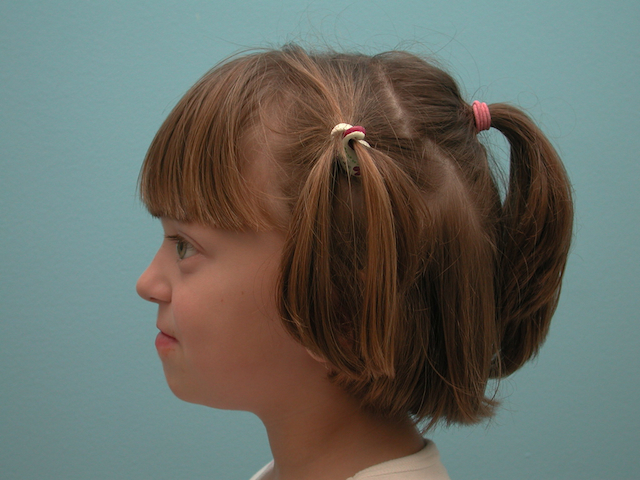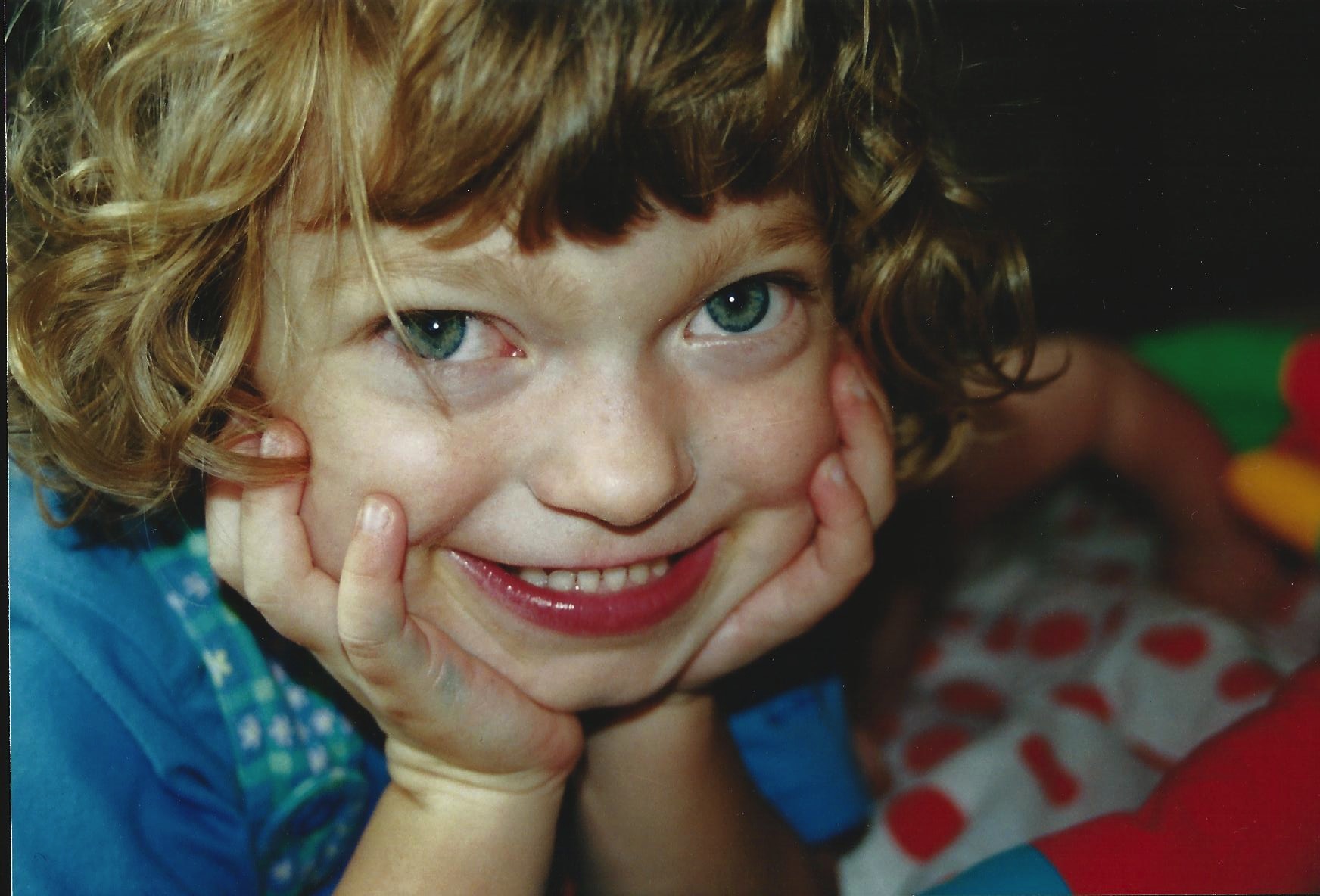I got to Seattle Children's Hospital's Craniofacial Center as a 4-year-old, no taller than my dad's knees, with blunt bangs and three pigtails. That first day I met my pediatrician Dr. Michael Cunningham, who I still see to this day. He had a big smile and firm shake and seemed to not only be interested in my facial structure, but also in the happenings of my pre-K life. And every member of my care team at Seattle Children's since him has been the exact same way. As a young girl with Crouzon Syndrome on a 14-year path leading up to a life-changing surgery, a surgery that would reposition the bones in my face, I really needed that.

Medical photo of Natalie taken at Seattle Children's at age four.

Natalie at home at age four.
For the first couple years, the doctor talk was directed at my parents, explaining the situation to them and what it would mean for me in the future. But once I was about eight, the doctors started turning to me and I got to help call the shots. I was the one who had to go through everything they explained to my parents, and it was time I be involved. For an 8-year-old, it was so exciting for these big doctors to be addressing me and actually wanting to hear what I thought about what my future held.
Around then I started talking to a surgeon at the Craniofacial Center, Dr. Richard Hopper. I don't know how I got lucky enough to move to Seattle, because Seattle Children's just happens to have one of the foremost craniofacial centers in the world and Dr. Hopper is a huge part of that. As a person who is, ironically, completely squeamish around blood and pretty much all aspects of surgery, I always ask him how he can love what he does so much and how he can cut people open every day. And he just lights up, and describes all the kids he helps, all the new techniques he's learning or teaching to others, and how there is no better job in the world.
Around age 16, my doctors started to get really serious about my surgery. It was no longer this event in the distance, but something that needed to be prepared for and planned now. It required more than a year of orthodontics before it could occur, so I needed to make a decision. Dr. Hopper told me my options, told me what he recommended (the most drastic one) and then left the decision up to me. After a lot of thinking, I decided to take Dr. Hopper's recommendation and do the surgery that took the longest, but had the best outcome for life after surgery.
After making that decision, my visits to Seattle Children's increased and I met my orthodontist, Dr. Hitesh Kapadia. I met with Dr. Kapadia every six weeks for almost two years to tighten my braces which moved my teeth around in my mouth until they were the proper placement for the major surgery I had this summer. In this surgery, a titanium halo device was attached to my skull. This device stayed on for about two months and slowly moved the bones in my face forward to their rightful position.
Some people have great relationships with teachers or coaches -- I have that with my doctors. They know me better than any of my instructors ever did and I can joke with them and talk about life. They really feel more like uncles than doctors.
Looking back now that my surgery is complete, I'm so grateful that I had this specific team of doctors at Seattle Children's. Going to the hospital is never very enjoyable and surgery is daunting, but knowing my doctors truly care about me as a person helped me feel comfortable and know that the outcome of my surgery was going to be worth it.
When I first saw myself without the halo off, I couldn't believe what I was seeing. I knew that I was going to look different than I did, but nothing can prepare you for waking up from anesthesia without a metal bar in front of your face for the first time in months and with prominent cheekbones for the first time in your life. There was the period, as Dr. Hopper warned me, where I would "mourned the loss" of my old face. But after that started to fade, along with my post-surgery swelling, I could see the gift that I had gotten from this surgery and started to embrace the new me.
Now that the halo device is off, I get to see myself and my face the way it was supposed to look like -- if I didn't have Crouzon Syndrome. It's a fresh start for me with a new facial structure just in time for me to begin a new chapter of my life. I started college this month at Villanova and am so excited for a new experience, and moving forward with more confidence and more strength. I'm of course nervous; there are a lot of new things within the span of about three months. Plus there are little things like spots on my face that are still slightly immobile, and the section of hair that was shaved where the incision was made is now growing back and sticking straight up at the crown of my head. But if those are the only concerns I have after all I've experienced, it was worth it and then some.

Natalie standing in front of the Villanova University sign on her first day of college.
<
Natalie in her dorm room at Villanova.
Though I am excited about my post-surgery life without braces and a face that helps me breathe, chew and better protect myself, I'm sad to be leaving Seattle Children's and the wonderful people I've met there. However, I know I'll find my way back there in some capacity in years to come -- hopefully by volunteering in the summers when I'm home from college.